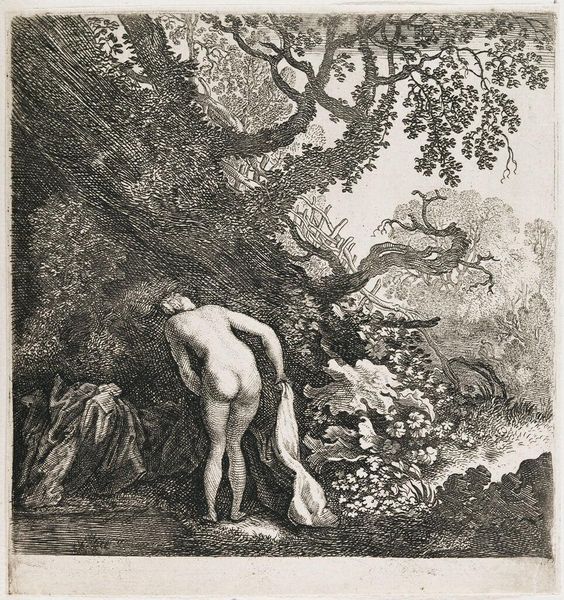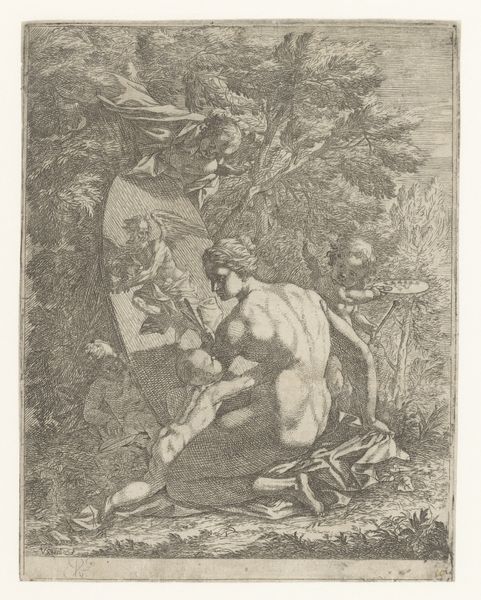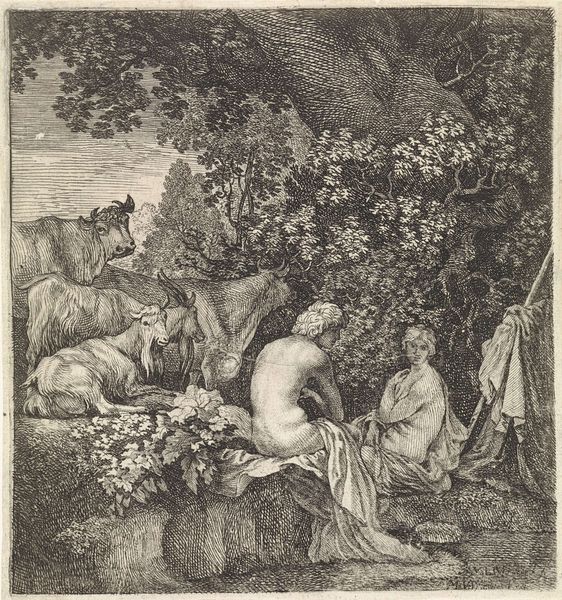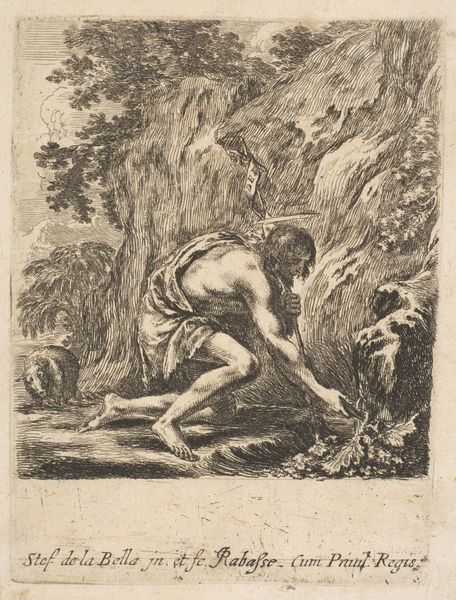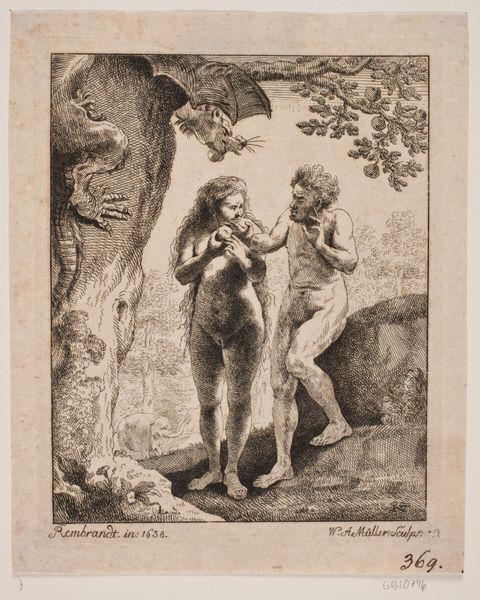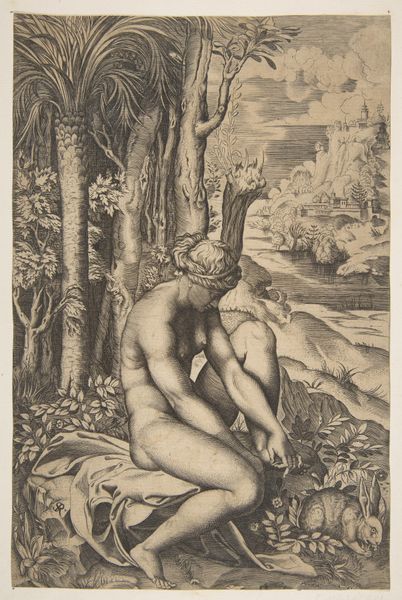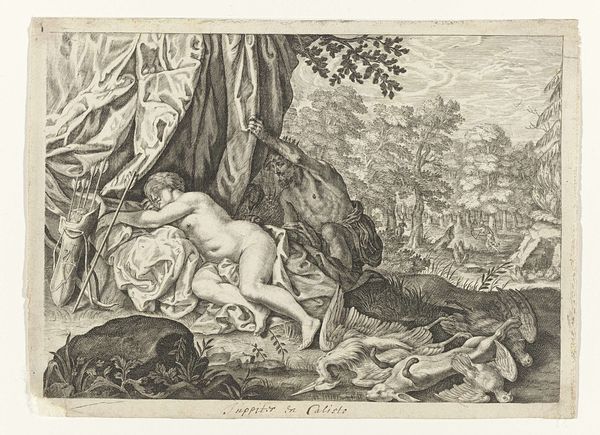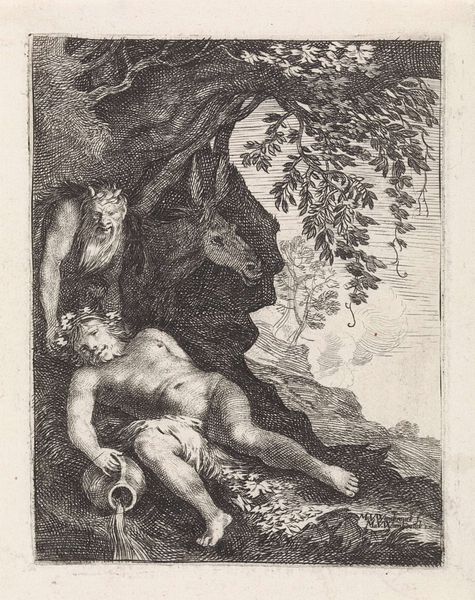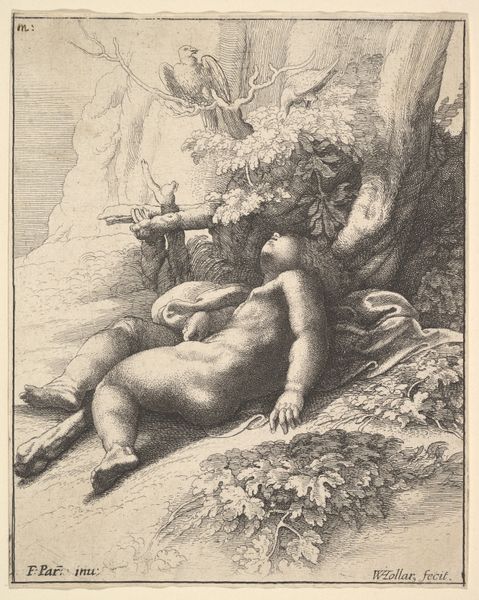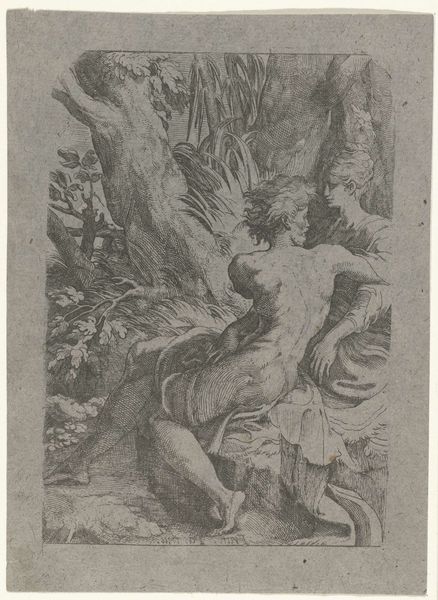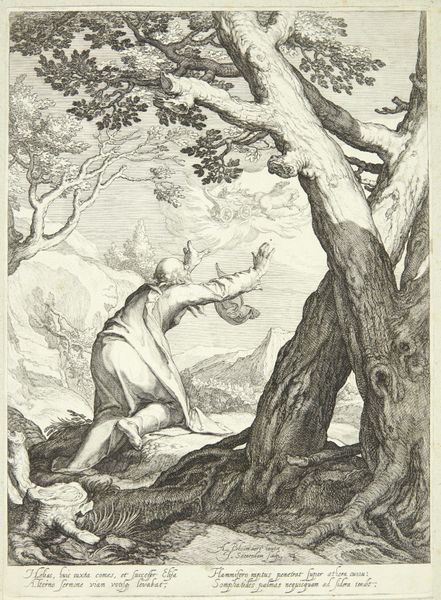
etching
#
light pencil work
#
baroque
#
pen sketch
#
etching
#
pencil sketch
#
landscape
#
figuration
#
personal sketchbook
#
pen-ink sketch
#
pen work
#
sketchbook drawing
#
pencil work
#
nude
#
sketchbook art
#
fantasy sketch
Dimensions: height 149 mm, width 140 mm
Copyright: Rijks Museum: Open Domain
Editor: This etching, “Bathing Woman, Seen From Behind” by Moyses van Wtenbrouck, dating from around 1600 to 1710, presents a lone nude figure in a dense, wooded area. It feels very private, almost voyeuristic, doesn’t it? What symbolic meaning do you think the image evokes? Curator: That's a perceptive reading. The nude figure in landscape certainly has echoes of biblical and mythological tropes – perhaps Eve after the Fall or a nymph surprised at her bath. The question becomes, what anxieties are being projected onto her form, and by whom? How does the artist use shadow to emphasize a loss of innocence, or perhaps an awakening awareness? Editor: That's a compelling point. The shadowy, dense background definitely amplifies the feeling of a hidden, forbidden space. The positioning of her body—leaning forward, partially obscured—it makes you wonder if she’s recoiling, or almost beckoning. Curator: And is this garden an Eden, a space of original innocence now corrupted? Or is it a symbol of untamed, raw nature where instinct and primal emotions hold sway? Consider the gaze—are we positioned as intruders, voyeurs complicit in her vulnerability? Or is the artist inviting a dialogue about our own relationship to the natural world? The figure holding a cloth brings an awareness to this loss. Editor: It's fascinating how much narrative is packed into what initially seemed like a simple, even quaint, etching. This has certainly shifted how I see depictions of the nude within landscape. I was ready to think this image of the woman bathing was straightforward, but I realize that I would miss some essential layers of its complexity if I didn't see the greater story. Curator: Precisely! Remember, images accrue meaning over time. What an image signified in the 17th century might be profoundly different from how it resonates with contemporary viewers. It’s in this evolving dialogue that the true power of art resides.
Comments
No comments
Be the first to comment and join the conversation on the ultimate creative platform.
